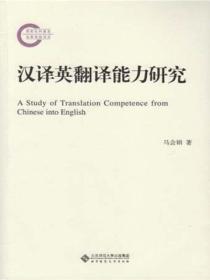三、翻译经验与翻译能力的关系
Shreve(1997)在《翻译能力的认知和发展》(Cognition and Evolution of Translation Competence)一文中指出,翻译能力并不是从一个人所具有的双语能力发展而来的,“职业翻译是一种建构翻译,它只有经过某种有意寻求的交际经验过程才能够获得”[12]。翻译培训对译者能力的发展起促进作用,逐渐积累的翻译经验更能使一个自然译者成为一个胜任翻译任务的建构译者。从翻译新手成为翻译学徒工不仅是指一个人从事翻译时间的长短,也体现在翻译的数量上。因为只有经过一定量的翻译实践,译者才能够在这一过程中不断地吸取教训,积累翻译经验,逐渐提高自己的翻译能力。周煦良曾说过:“任何搞翻译的人都有其学徒阶段,翻译《希罗普郡少年》为我完成了学徒阶段,使我学会了为了适应格律而改变句子的结构和另外造句,懂得以文言入诗,以外语结构入诗的不可避免性,懂得了汉语同义词的丰富和自己词汇的贫乏,懂得了自己虽然是中国人,但是掌握本国语言的能力远不够翻译的要求,从而对汉语语法也留意起来。”[13]
Shreve(1997)认为翻译能力是“交际能力”的一种特殊形式。针对Harris(1977)以及 Harris and Sherwood(1978)提出的“自然翻译”的概念,他提出了“建构翻译”的观念。任何一个双语者都拥有一种自然翻译的能力,但要成为一个专业译者,双语者还需要经过一个建构翻译能力的过程。所谓建构翻译能力即“能够根据不同情形的需要转换翻译形式和产出各种不同语言形式(翻译产品)的能力”[14]。Shreve认为一个人的翻译能力是由自然翻译能力向建构翻译能力发展的。在自然翻译阶段,个体拥有相似的自然翻译能力,但是后期翻译经验的不同导致了建构能力不同的译者。翻译经验的增加能够促使译者内在图式的改变和重构,并在这一过程中建构翻译能力。“自然译者具有某种翻译图式;每次翻译时,这次翻译活动就被阐释成该活动模式的总图式的一种输入。然后这次翻译活动被添加到图式,从而提高了图式的效力”[15],具体如图5-2所示:
图5-2 译者翻译能力的演变
一个自然译者的翻译图式会随着翻译经验的增加而发生变化,翻译能力又会随着变化了的图式而得以发展。在这一过程中,译者从翻译经验中学到了什么,又是怎样学到的?对于这一问题,Robinson解释说:
译者开始时是盲目地、凭直觉和本能了解一种语言(无论是源语还是译入语)中的一个词或短语是什么意思,一个句子结构又是怎样构成的(本能阶段);然后他开始翻译这些单词和短语,在两种语言之间来回往返,感觉到单词、短语和句子结构在两种语言中的相同和不同(经验阶段);随着时间的推移,译者逐渐将遇到的具体问题找到的具体解决方法升华成或多或少的无意识的行为模式(习惯阶段),从而帮助译者迅速和高效地翻译,同时也降低了翻译中出现停顿和解决麻烦问题的需求。[16]
可见,从凭直觉和本能进行翻译,经过翻译经验的积累,到经验逐渐沉淀成习惯,译者在翻译过程中开始愈来愈少地关注翻译决策的过程,在面对翻译任务时愈来愈感到轻松自如和信心十足。在能力发展的过程中,翻译经验的积累、图式的重构起到了重要的作用,翻译能力随着翻译经验的增加而得到提升。
[1] 管兴忠:《Anthony Pym 的翻译观》,《解放军外国语学院学报》2012年第2期。
[2] 潘菽:《教育心理学》,北京,人民教育出版社,1992,第138~139页。
[3] L?rscher,Wolfgang:“A Process-Analytical Approach to Translation and Implications for Translation Teaching”,Ilha do Desterro,33,1997:69-85.
[4] Presas,Marisa:“Bilingual Competence and Translation Competence”,In Sch?ffner and Beverly Adab(eds.),Developing Translation Competence, Amsterdam,John Benjamins,2000.
[5] PACTE:“Acquiring Translation Competence:Hypotheses and Methodological Problems of a Research Project”,In Allison Beeby,Doris Ensinger and Marisa Presas(eds.),Investigating Translation,Amsterdam,John Bejamins,2000:99-106.
[6] Chesterman,Andrew:“Teaching Strategies for Emancipatory Translation”,In Christina Sch?ffner and Beverly Adab(eds.),Developing Translation Competence,Amsterdam,John Benjamins,2000.
[7] Hoffman,Robert R.:“The Cognitive Psychology of Expertise and the Domain of Interpreting”, Interpreting,2(1/2),1997:189-230.
[8] Shreve,Gregory M.:“Cognition and the Evaluation of Translation Competence”,In Joseph H.Danks,Gregory M.Shreve,Stephen B.Fountain and Michael K.McBeath(eds.),Cognitive Processes in Translation and Interpreting, Thousand Oaks,Sage Publications,1997:120-136.
[9] Hoffman,Robert R.:“The Cognitive Psychology of Expertise and the Domain of Interpreting”, Interpreting, 2(1/2),1997:197-198.
[10] PACTE:“Building a Translation Competence Model”,In Fabio Alves(ed.),Triangulating Translation:Perspectives in Process-oriented Research,Amsterdam,John Benjamins,2003:49-50.
[11] Presas,Marisa:“Bilingual Competence and Translation Competence”,In Sch?ffner and Beverly Adab(eds.),Developing Translation Competence, Amsterdam,John Benjamins,2000:29.
[12] Shreve,Gregory M.:“Cognition and the Evaluation of Translation Competence”,In Joseph H.Danks,Gregory M.Shreve,Stephen B.Fountain and Michael K.McBeath(eds.),Cognitive Processes in Translation and Interpreting, Thousand Oaks,Sage Publications,1997:125.
[13] 王寿兰(编):《当代文学翻译百家谈》,北京,北京大学出版社,1989,第596页。
[14] 王寿兰(编):《当代文学翻译百家谈》,北京,北京大学出版社,1989,第130页。
[15] Shreve,Gregory M.:“Cognition and the Evaluation of Translation Competence”,In Joseph H.Danks,Gregory M.Shreve,Stephen B.Fountain and Michael K.McBeath(eds.),Cognitive Processes in Translation and Interpreting, Thousand Oaks,Sage Publications,1997:130.
[16] Robinson,Douglas:Becoming a Translator, London,Routledge,1997:98.


